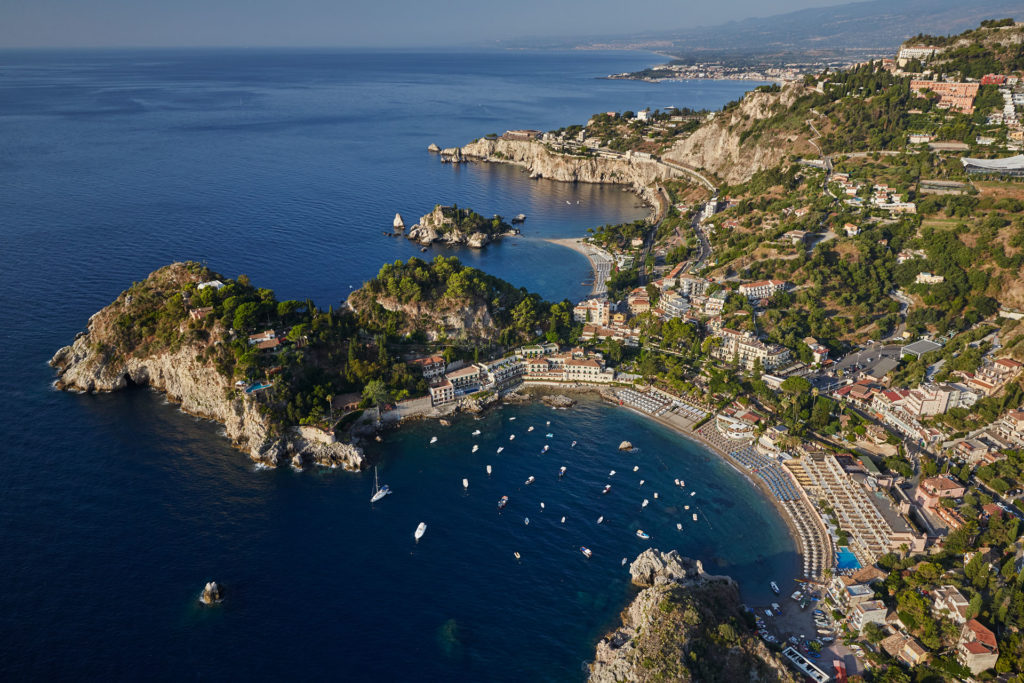
What do the wines of Southern Italy have in common? Some of the best ones—the inkiest, most mineral, most concentrated versions—come from vineyards planted in volcanic soils. These soils, remnants of geological history, impart on wines a very specific sense of terroir, teeming with minerality. The majority of Italy’s volcanic wines are made from native varieties, many of which grow on old vines.
The two major winemaking regions in the country’s south that benefit from volcanic soil and activity are Campania and Sicily. Both of these regions are defined, in some sense, by their soils, which result in identifiable, complex wines. Both red and white varieties thrive in Italy’s volcanic south, acquiring a distinct sense of place from the soils in which they grow. This is, after all, terroir at its very finest.
Campania is a warm, water-adjacent region in the country’s southwest, whereas Sicily is a volcanic island off of the southwestern coast. Each of these regions produce their own distinct styles of wines, from both red and white varieties, in soils of basalt, tuffa, and other types of volcanic rock. Read on for a deeper dive into the incredible volcanic wines of Southern Italy.
Campania
In Italy’s Southwest is the wine region of Campania, a region defined by twin volcanoes: Campi Flegrei and Mount Vesuvius. The latter is among the world’s most famous. Still active in the early part of the 20th century, this volcano was responsible for burying Pompeii and destroying a civilization. Because this volcano has such pronounced, ash-heavy eruptions, it is credited with producing soils in growing areas as distant as 30 miles away.

In fact, 30 miles away is Irpinia, the native home of Aglianico, an inky, near-black, tannic grape used in the famed wines of Taurasi. The hills surrounding the province of Avellino are best known for Taurasi, a full-bodied style of wine with red fruits, crushed stone, and brooding spice on the palate. These are wines with exceptional depth that can benefit from time in the cellar. Taurasi must spend three years in the cellar before release. Grapes are grown at altitude, at roughly 500 meters above sea level.
White grapes thrive in the volcanic region of Campania, too. Of particular note are Greco di Tufo, Fiano di Avellino, and Falanghina, three stellar grapes that benefit from the rich soil. Greco di Tufo earns its name from the town of Tufo. Wines produced from this grape are bright, clean, and full of minerality, stone fruit, and notes of citrus. The wines produced from the golden-hued Fiano di Avellino, on the other hand, are full, round, and age worthy, often displaying notes of tropical fruits. Falanghina produces floral whites with salinity—the vineyards growing these grapes are closer to the sea.
The overarching quality of the volcanic wines of this region is complex. While the reds achieve an uncommon depth owing to the soil content, the whites are vibrant and soulful. These are, largely, serious wines that can withstand the test of time.
Sicily
This Italian island packs a serious punch when it comes to volcanic wine. Home to Europe’s tallest active volcano, Mount Etna, Sicily boasts rich, expressive wines that owe much to their volcanic soils. The Etna DOC is where the volcano itself resides, and, accordingly, the volcanic wines. The red grape of preference in this appellation is Nerello Mascalese, a grape that, at its finest, offers a delicate bouquet and complex palate, all of which is amplified by the pulse of minerality running through it. Nerello Cappuccio is another commonly grown grape, though it is typically seen as a blending grape.
The white grape of note on the island of Sicily is Carricante, a pure, white grape that is also indigenous to Sicily. This is a late-ripening variety that grows well at high altitude; Mount Etna provides the perfect habitat for this height-loving grape. Wines made from Carricante are fresh in style, with a slightly floral bouquet and a straw color. Catarratto, the most widely planted Sicilian grape, is prevalent in the Etna DOC, too, as is Minella Bianca, a grape native to Etna that is rarely seen outside of the region.
Mount Etna provides some interesting climate factors for grape-growers. Owing to varying microclimates and proximity to the sea, different parts of the volcano can host different environments completely. Altitude ranges from 400 meters above sea level to just above 1,000 meters above sea level.
Vicissitudes in climate and precipitation make winemaking somewhat of a challenge in Etna, but the reward is wines that benefit from the natural resource that is volcanic soil. Some have likened the wines made from Nerello Mascalese to the wines of Burgundy: terroir-driven wines that are born for the cellar. Burgundian or not, the wines of Etna are stunning expressions of the volcanic qualities of this part of the world.
Wine4Food Recommends
Monteleone, from Sicily
Il Fondo Antico, from Sicily
 Hannah Selinger’s work has appeared in The New York Times, The Washington Post, The Kitchn, RawStory.com, Edible Long Island, Edible East End, and numerous other regional and national publications. A Certified Sommelier through the Court of Master Sommeliers, she writes the monthly wine column for the Southampton Press. Hannah lives with her husband, two sons, and two dogs in East Hampton, NY. Website: http://www.hannahselinger.net; Twitter: @hannahselinger; Instagram: @druishamericanprincess.
Hannah Selinger’s work has appeared in The New York Times, The Washington Post, The Kitchn, RawStory.com, Edible Long Island, Edible East End, and numerous other regional and national publications. A Certified Sommelier through the Court of Master Sommeliers, she writes the monthly wine column for the Southampton Press. Hannah lives with her husband, two sons, and two dogs in East Hampton, NY. Website: http://www.hannahselinger.net; Twitter: @hannahselinger; Instagram: @druishamericanprincess.



